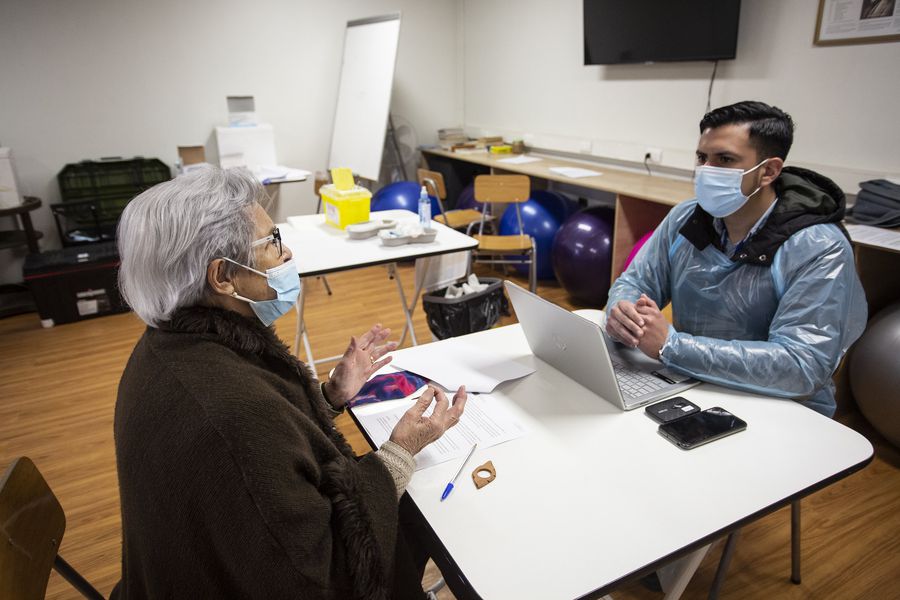“The introduction of a booster dose should be implemented under a model of prioritization of access to vaccination that guarantees that those most at risk (…) and with the longest duration of the complete vaccination schedule, do so first. Essentially, health workers, the population with immunosuppressive treatment and transplants, the elderly, people in long-stay residences, the population deprived of liberty, people with comorbidities and individuals who perform critical tasks for the functioning of the country ”, holds the recommendation that, at the request of the Ministry of Health, prepared the Advisory Committee on Vaccines and Immunizations (Cavei).
Thus, the technical entity, after reviewing the documentation and national and international experience available, supported the inoculation of a third dose of the Covid-19 vaccine, in line with the intention that the Ministry of Health and President Sebastián Piñera, The definition of the scheme and the type of vaccines to be used is still pending.
“The reinforcement of the primary regimens must begin with the population that has completed their primary regimen with a COVID-19 vaccine with a technological platform other than messenger RNA,” the experts detail. thus stating that those vaccinated with Sinovac, Astrazeneca and Cansino should be prioritized over those who have received doses of Pfizer.
The date? Everything will depend on when the preliminary results of the A clinical study that began to be carried out at the Central Post Office in more than 570 older adults, health officials and long-stay establishments. But nevertheless, Different sources of Health have confirmed that it is feasible that it is in August.
Although in practice, Minsal has already made the first group official that will be inoculated with a third injection: immunosuppressed and transplanted patients, for whom a protocol has already been developed, which must have a medical indication.
In his analysis – a 25-page document – the Cavei suggests that injections start with the group that was vaccinated first, addressing possible declines in immunity after six months that have been described by follow-ups such as that of the Catholic University of those vaccinated with CoronaVac.
In the first instance, and according to the council’s proposal, health workers would be the first to receive these doses. This would serve to protect the population most at risk of severe infection or death from Covid-19.
Then would come the population with immunosuppressive treatment and transplant patients, elderly, people in long-stay residences, population deprived of liberty, people with comorbidities and individuals who perform critical tasks for the operation of the country.
On what is the right time to inoculate a third dose, the document indicates, citing international studies, that it will depend on the goal that is being sought.
“If prevention of severe Covid-19 remains the primary goal of the overall vaccination strategy, it is unlikely that most people will require booster doses within 18-24 months. However, people older than 70-75 years and other at-risk populations can benefit from booster vaccination within a year of the primary schedule, ”says Cavei.
But if what is sought is to reduce viral circulation, the doses will probably be necessary before 2022: “If the strategy is expanded to limit winter virus circulation (variant), the target for primary immunization coverage should increase to more than 80-85% of the adult population. Probably, booster doses will be necessary before 2022 to maintain a sufficient level of population immunity ”.
The evidence collected by the Cavei does not particularly recommend a formula for the boost against Covid-19. However, its president Jeannette Dabanch explains to The Third what the suggestion “It remains open to different homologous or heterologous schemes.” That is, an additional dose of the same vaccine from the original scheme or from another platform.
“The platforms used will depend on the purpose or objective: for the objective of reducing transmissibility, messenger RNA platform vaccines would be adequate”.
Thus, other vaccines, such as CoronaVac, could be used to reduce mortality and hospitalization, explains Dabanch. Ultimately, everything will depend on the risk criteria of each group.
The recommendation, in fact, cites the different studies available so far of mix-and-match (combination of heterologous vaccines) and third doses. In fact, for CoronaVac, the Cavei highlights that a study still without peer review, where a third vaccine of the same scheme is added, allows inferring that its use “It involves low risk, at the same time that its ability to enhance the antibody response induced with a primary scheme will be effective.”
However, the second factor that will come into play in defining the dose chosen for a booster is the supply. And in the document the detail is attached on how many vaccines Chile has acquired and how many still remain to be sent by the laboratories.
For example, in the case of Pfizer, 14,100,255 have been acquired and of these – as of July 19 – 6,101,940 have arrived. Or from Sinovac, 19,671,476 doses have been purchased, and 18,671,476 have arrived. And on the latter, there remains a million doses that are expected to arrive this Friday.
–


